Botox®® has become the most popular anti-aging treatment for facial wrinkles worldwide. Its amazing cosmetic benefits have made it a household name. Those who have yet to experience the convenience of Botox® injections probably know someone who can attest to how well it restores and maintains smooth skin.
Although mainly used to resolve wrinkles caused by expressions like crow’s feet and forehead lines, Botox® has been effective in treating other issues as well. Some of these problems are aesthetic, others are not.
You may have friends or family members who have discovered the alternative uses of Botox® to address issues like excessive sweating, muscle spasms, or recurring migraines. Botox® improves quality of life for many issues.
Smooth Chest and Neck Wrinkles
Because of age and sun exposure, many individuals develop wrinkles between their breasts and on their neck. Injecting Botox® into the pectoral muscles can smooth these unwanted blemishes. Botox® can also resolve those horizontal bands which develop around the neck. Injections into the muscles above and below these bands applied completely around the neck will relax the muscles, resulting in smooth skin from chin to chest.
Non-Surgical Nose Job
A non-surgical, minimally-invasive nose job using injectables rather than surgery still effectively alters nose shape, bridge, and nostril height. The procedure can accomplish many of the aesthetic results of surgical rhinoplasty, although with temporary results.
Fillers modify nose tip by turning it up and defining it. Combining Botox® with HA fillers or using Botox® alone improves nose contour. The procedure takes about 15 to 20 minutes, longer if using a numbing cream.
Lip Lift
When considering non-surgical lip enhancement, patients tend to think dermal fillers. Although fillers do make the lips larger, Botox® relaxes the lower lip’s muscles resulting in that attractive pout. Whether used alone or in conjunction with dermal fillers, Botox® can give your lips a subtle, magnified pout by flipping the lip line out and rolling it gently outward. Sexier, fuller lips have been sought after for decades by movie stars and models alike. The good news is that the process of relaxing the muscle fibers does not affect the muscle function. The procedure takes less than one minute and should be done only by board-certified professionals.
Migraines
Botox® is the only FDA-approved injectable for chronic migraines, officially designated as pain for at least 15 days a month. The more frequent the migraines, the better Botox® works. If a patient has fewer than 15 headaches per month, they should seek remedies other than Botox®.
How Does Botox® Treat Migraines?
To treat migraine headaches, your injector will apply Botox® around the nerve fibers at the source of your the pain. Botox® blocks the release of chemicals which transmit the pain to the nerve endings. This process prevents the activation of the pain network in the brain, stopping the headache before it starts. It may take two or three sessions, however, before the patient realizes the maximum effect of Botox® injections. After increasing the treatment cycle, patients see a reduction in pain. Just two treatment sessions typically reduce the number of headaches by half.
Who Uses Botox® for Migraines?
The FDA has approved the use of Botox® for the treatment of chronic migraines in adults 18 years or older. For children, Botox® is considered an “off-label” treatment. Off-label means a doctor can prescribe it, but insurance may not cover it because it’s not specifically prescribed for patients that young.
What is Botox® Treatment Like for Migraines?
Botox® treatment sessions for migraines last about 20 minutes. The injector uses tiny needles which will feel like a pinprick. Then small amounts of Botox® will be applied to the shallow muscles in the head and neck. Treatment usually involves 31 injections in seven target areas. The most common complaint after treatment is a sore neck which can be resolved using ice packs. It may take up to six months to realize maximum migraine-relieving benefits, but this treatment gets lives back to normal. Even better, patients can continue their regular medications with no risk of drug interaction.
Excessive Sweating
Botox® is also an effective treatment for excessive sweating (hyperhidrosis). The injections block the nerve signals which tell the area to sweat. It prevents the sweat glands from producing too much moisture in the target areas like under the arms and the palms. Nerve-endings will return to normal after about four to six months, so additional treatments are necessary. Eventually, patients go for longer periods without treatment.
Evaluation for Excessive Sweating
Patients should be evaluated for excessive sweating by their health care provider because more serious conditions could underlie the condition. Patients may want to consider other solutions before choosing Botox®. Clinical-strength antiperspirants resolve excessive sweating in some cases.
Botox® Treatments for Excessive Sweating
The treatment involves an anesthetic cream applied to the treatment site one hour before the injections. Then, the injector cleans the area before applying the Botox® with multiple injections. There may be some swelling, bruising or tenderness after the treatment, but these effects are typically minor. Patients see improvement in approximately five days with maximum results in two weeks.
The injections are relatively comfortable with a high level of success. The underarms respond well as do the hands and feet. Injections have a higher degree of success when excessive sweating is confined to one area.
Acne
If your acne-prone skin seems immune to blemish-fighting lotions, creams, and masks, it may feel like combating your problem is a lost cause. Fortunately for many patients, Botox® is proven effective in reducing the sebaceous glands’ ability to produce its oily substance. In turn, Botox® is a viable solution to stave-off acne-causing bacteria and reduce breakouts.
Botox® Treatment for Acne
Acne treatment involves injecting small amounts of Botox® into target facial muscles to block and paralyze acetylcholine, which is released into the muscle by nerves. Sebaceous glands have the same receptors as acetylcholine. Botox® injections reduce oil production much like they reduce excessive sweating by blocking nerve endings’ ability to produce sweat. A decrease in oil production will shrink pore size which means less follicular sweating.
Urinary Incontinence
Botox® has been an effective treatment for an overactive bladder for some time now. It decreases the muscle contractions of the bladder experienced by older women and patients with neurologic injury or disease.
Botox® Treatment for Overactive Bladder
Using a catheter, doctors flush the bladder muscle with local anesthesia. Botox® is injected into the bladder muscle. A numb bladder makes the injections more comfortable. The doctor then passes a catheter up the urethra into the bladder. A tiny needle is positioned through the scope to make multiple injections so Botox® can spread throughout the bladder. Patient report that they tolerate the procedure well.
Results are realized to some extent after one week and with maximum effect after two weeks. Botox® for overactive bladder is a temporary solution which lasts approximately six to eight weeks.
Gummy Smile
A gummy smile (gingival display) is an aesthetic condition which occurs when the upper gums are too exposed. Individuals who suffer from this condition often feel self-conscious about their smiles. Many dentists and orthodontists offer treatments to relieve a gingival display, but many are surgical, expensive, and very invasive.
Botox® is an effective non-surgical treatment to reduce that gummy smile appearance with injections on either side of the mouth. These injections relax the muscle so the lips can cover up the gums. The results are a more pleasing smile and an increase in showing those pearly whites without self-consciousness.
Muscle Spasms
Botox® is a muscle relaxant which has been proven to improve range of motion and relieve muscle related pain. Almost one million patients have had success treating pain relief with Botox®.
It works by blocking the release of acetylcholine from the connection between a muscle and a nerve. Typically, acetylcholine binds to the receptor at this area and causes a muscle contraction.
Relief begins after one week and lasts about three months. Recommended treatments are four per year, one every three months. Long-term results are found to be effective with Botox®. When used in conjunction with physical therapy, Botox® results are maximized.
Botox® administered for muscle pain has few side effects. Discomfort at the injection site, tenderness and swelling is temporary and can be managed by ice packs.
Teeth Grinding
Individuals who clench and grind their teeth during sleep may find relief with Botox® injections according to a recent study. This condition, known as “bruxism,” can lead to damaged teeth, jaw issues, pain, and headaches. Injecting Botox® into chewing muscles in the cheek area reliably blocks these impulses for most patients.
Jowls
With age, the muscles in the lower face tighten and shrink. This event pulls the face down, causing unsightly jowls. Injecting Botox® under the platysma muscle will cause it to relax and effectively give it a lift. The result is a defined cheek line which transitions well into the neck.
Next Step
Get the smoother, younger skin that puts a pep in your step when you contact our Portsmouth, New Hampshire office online or via telephone at (603) 294-4526. At AW Plastic Surgery, Dr. Wilson and his staff ensure you understand all of your treatment options before devising the personalized plan to meet your goals. We look forward to getting to know you!
